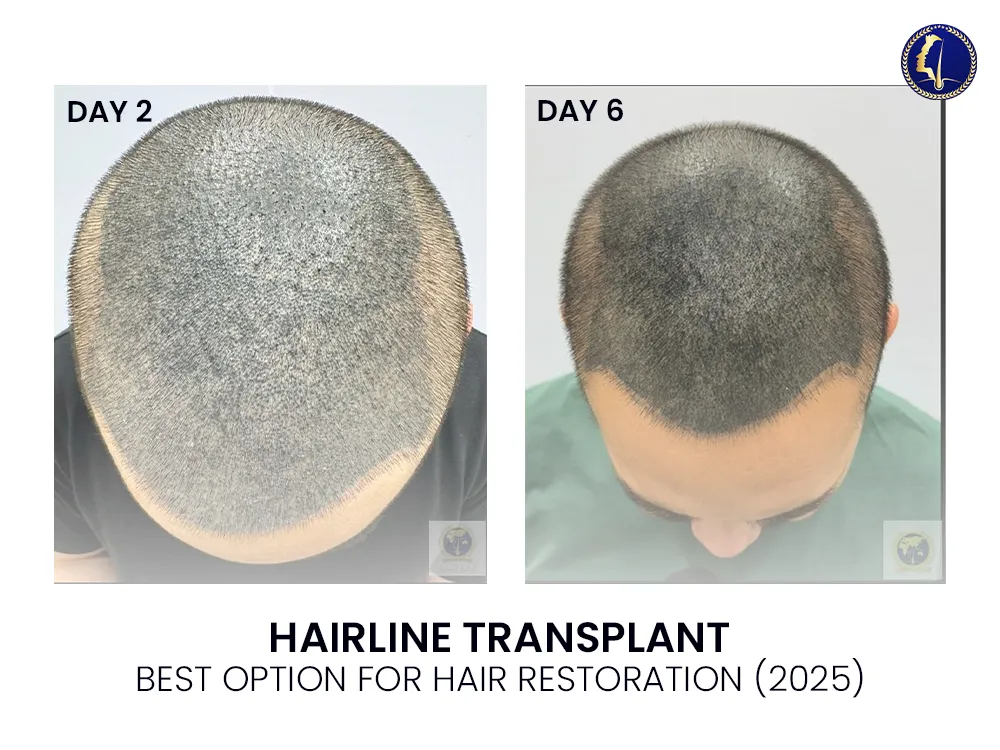Hairline Transplant: The Best Option for Hair Restoration? (2025)

Hairline Transplant Hairline transplant is a type of hair restoration procedure that focuses on reshaping or restoring hair to the hairline, typically in cases where it has receded or thinned due to factors such as genetics, aging, or hair loss conditions like male or female pattern baldness. The procedure involves transplanting healthy hair follicles from the donor area (usually the back or sides of the scalp) to the thinning or receding areas along the hairline. Hairline Transplant Procedure The procedure involves several key steps: Consultation and Assessment: Before the transplant, the doctor will evaluate your hair loss, scalp condition, and overall health to determine whether you’re a good candidate for the procedure. This might include a physical exam and blood tests to assess any underlying medical conditions. Donor Hair Harvesting: There are two primary methods for harvesting hair follicles: Follicular Unit Transplantation (FUT): A strip of scalp is removed from the donor area, and individual hair follicles are then transplanted to the recipient area. Follicular Unit Extraction (FUE): Hair follicles are individually harvested from the donor area using a tiny punch tool, leaving minimal scarring. Implantation: After harvesting the follicles, they are carefully implanted into the thinning or balding areas. The surgeon creates small incisions and places each follicle to ensure a natural hairline. Post-Procedure Care: After the procedure, you may experience some swelling, redness, or discomfort, but these symptoms typically subside within a few days. The transplanted hair will shed within 2-3 weeks, but new hair growth should appear within 3-6 months. Results: The full results of a hairline transplant may take 12-18 months to fully manifest. However, the new hair should be thicker, healthier, and permanent. Types of Hair Transplant Surgeries Feature FUE (Follicular Unit Extraction) FUT (Follicular Unit Transplantation) Procedure Individual hair follicles are extracted and transplanted one by one. A strip of skin is removed from the donor area, then hair follicles are dissected and transplanted. Scarring Minimal scarring, typically tiny dot-like scars where follicles are extracted. Linear scar at the donor site where the strip of skin was removed. Recovery Time Faster recovery, typically 5-7 days for initial healing. Longer recovery time, around 10-14 days for initial healing. Hair Density Generally provides lower density in one session, multiple sessions may be needed for larger areas. Can transplant a larger number of follicles in one session, resulting in higher density. Pain Level Minimal discomfort, usually local anesthesia is used. Slightly more discomfort due to the strip removal, but still typically done with local anesthesia. Procedure Duration Longer procedure (6-8 hours) due to individual follicle extraction. Shorter procedure (4-6 hours) since it involves removing a strip. Ideal Candidates Best for those with small to moderate hair loss or those who want minimal scarring. Best for those with extensive hair loss and those willing to accept a linear scar. Results Natural-looking results with minimal visible scarring. Also provides natural-looking results, but with a visible scar at the donor site. Cost Generally more expensive due to the detailed, labor-intensive process. Typically less expensive compared to FUE, as fewer hours are needed for the procedure. Both techniques have their benefits, and the best choice depends on factors such as the degree of hair loss, budget, and personal preferences. Causes of Hair Loss Before diving into the benefits of hairline transplants, it’s essential to understand the underlying causes of hair loss. Several factors can contribute to hair thinning and baldness: Genetics (Androgenetic Alopecia): The most common cause of hair loss is heredity. Known as male-pattern or female-pattern baldness, this condition is linked to hormones and genetics, typically leading to gradual thinning of hair around the temples and crown. Hormonal Imbalances: Hormonal changes due to pregnancy, menopause, or thyroid disorders can lead to significant hair loss in women. Aging: As we age, hair growth naturally slows down, and hair follicles may become smaller, producing thinner hair or none at all. Stress: Severe physical or emotional stress can lead to a type of hair loss called telogen effluvium, where a large number of hair follicles enter the resting phase, leading to hair shedding. Nutritional Deficiencies: Poor diet or a lack of essential vitamins and minerals (like iron, biotin, and vitamin D) can weaken hair and lead to hair loss. Medical Conditions: Autoimmune diseases such as alopecia areata, fungal infections, or scalp conditions like dandruff can also contribute to hair thinning and loss. Male Hair Loss Pattern (Norwood Scale) Stage Description Hair Loss Pattern I Minimal or No Hair Loss Small, minimal recession at the temples or no noticeable hair loss. II Mild Hair Loss Receding hairline at the temples. III Moderate Hair Loss Noticeable recession at the temples, forming an “M” shape. IV Advanced Hair Loss Larger hair loss at the temples and crown, leaving a thin strip. V Severe Hair Loss Further thinning of the front and crown, forming a wider bald spot. VI Very Severe Hair Loss Significant hair loss at the front and crown, leaving a narrow strip of hair. VII Complete Hair Loss Almost total hair loss, with a small rim of hair around the sides and back. Hair Restoration Options Treatment Effectiveness Duration Cost Side Effects Hairline Transplant High effectiveness, long-lasting results Permanent (new hair grows after 6 months) RM 10,000 – RM 30,000 (depending on the clinic and country) Swelling, redness, infection risk Medications (Finasteride, Minoxidil) Moderate effectiveness, slow results Ongoing (requires long-term use) RM 200 – RM 300 monthly Possible sexual side effects (finasteride), scalp irritation (minoxidil) Platelet-Rich Plasma (PRP) Therapy Moderate to high effectiveness, boosts hair growth Temporary, requires follow-ups every few months RM 1,500 – RM 3,000 per session Mild discomfort, swelling Hair Wigs or Extensions Immediate but temporary solution Non-permanent RM 500 – RM 3,000 (depending on quality) Can be uncomfortable, may damage natural hair Hairline Transplant Cost In Malaysia Generally, the price of FUE Hair Transplants in Malaysia ranges from RM5,500 to RM15,000, with larger procedures costing more due to the increased time and precision required. Conclusion


